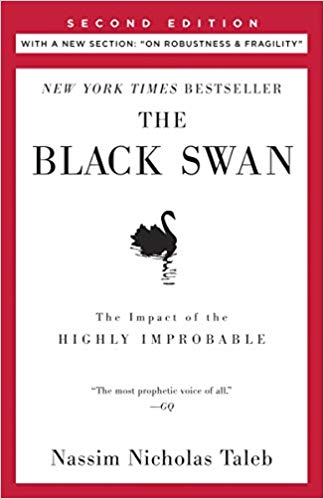

This article is an excerpt from the Shortform summary of "The Black Swan" by Nassim Taleb. Shortform has the world's best summaries of books you should be reading.
Like this article? Sign up for a free trial here .
What is the butterfly effect theory? How is it related to the idea of nonlinearities? How does it explain why we make bad predictions?
The butterfly effect theory is the idea that a small change in a nonlinear system can have huge effects in the larger system. This idea was proposed by an MIT meteorologist, who discovered that an infinitesimal change in input parameters can drastically change weather models.
We’ll cover what the butterfly effect theory is and how small changes can have large effects.
The Butterfly Effect Theory and Nonlinearities
An example of nonlinearities is chaos theory’s “butterfly effect.” The butterfly effect theory was established in the 1960s when a meteorologist at MIT modeling weather patterns discovered that a minuscule rounding change in his input parameters resulted in tremendously different weather events. Thus the concept that a butterfly flapping its wings in one part of the world can cause a hurricane in another.
Poincaré’s Nonlinearities
How is the butterfly effect theory related to nonlinearities? Henry Poincaré, arguably the most highly regarded mathematician of the late 19th-century in France, contributed to the theory of unpredictability by proposing the existence of nonlinearities—small phenomena that, as time goes on, can have profound consequences.
A seminal illustration of the concept is the “three-body problem.” In a planetary system consisting of two planets (bodies), predictions about those planets’ motion are easy to make: One need only account for the relation between the planets. But if a third body enters the equation—perhaps a comet, passing between the two planets—the relation changes. Although the comet’s effects may not be visible at first, the tiny forces it has exerted on the planets will compound with each cycle of the system, potentially resulting in massive changes.
Each of these examples, including the butterfly effect theory, illustrates the difficulty of making accurate predictions in a “dynamical system,” wherein there are multiple variables and even slight changes can drastically alter results. When it comes to dynamical systems, Poincaré noted that the properties of the system can be observed and discussed, but there’s no way to compute—to use numbers—to describe the system.
Why We Can’t Know What We’ll Know
Epistemic arrogance, the pretensions of “experts,” our ever-increasing access to information—all belie an incontrovertible fact: In many, perhaps even most, areas of our lives, prediction is simply impossible.
The butterfly effect theory is one explanation of why predictions are impossible.
Take discoveries, for example. At any given moment, there are scores of scientists, scholars, researchers, and inventors around the world working diligently to better our lives and increase our knowledge. But what often goes unremarked is that the discoveries with the profoundest impact on our lives are inadvertent—random—rather than the reward for careful and painstaking work.
Because earth-shattering discoveries are unexpected or inadvertent, their importance, at least in the beginning, often goes unrecognized. This is the same concept as the butterfly effect theory. Small changes have major impacts. When Darwin presented his findings at the Linnean Society, the 19th-century’s preeminent institution of natural history, its president dismissed the theory as “no striking discovery.”
———End of Preview———

Like what you just read? Read the rest of the world's best summary of "Black Swan" at Shortform . Learn the book's critical concepts in 20 minutes or less .
Here's what you'll find in our full Black Swan summary :
- Why world-changing events are unpredictable, and how to deal with them
- Why you can't trust experts, especially the confident ones
- The best investment strategy to take advantage of black swants





![Is the World Getting Better or Worse? [Statistics] Is the World Getting Better or Worse? [Statistics]](https://www.shortform.com/blog/wp-content/uploads/2019/07/factfulness-earth-270x270.jpg)
